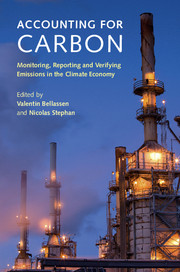Book contents
- Frontmatter
- Contents
- List of figures and map
- List of tables
- List of boxes
- Notes on contributors
- Acknowledgements
- 1 Introduction: key notions and trade-offs involved in MRVing emissions
- Part I MRV of territorial/jurisdictional emissions
- Part II MRV of industrial sites and entities
- Part III MRV at offset project scale
- 11 Trendsetter for projects: the Clean Development Mechanism
- 12 Case study 1: monitoring requirements for projects reducing N2O emissions from fertilizer use across standards
- 13 Case study 2: monitoring requirements for reforestation and improved forest management projects across standards
- 14 Case study 3: monitoring requirements for fugitive emissions from fuels in the CDM
- 15 Synthesis
- Index
- References
12 - Case study 1: monitoring requirements for projects reducing N2O emissions from fertilizer use across standards
from Part III - MRV at offset project scale
Published online by Cambridge University Press: 05 March 2015
- Frontmatter
- Contents
- List of figures and map
- List of tables
- List of boxes
- Notes on contributors
- Acknowledgements
- 1 Introduction: key notions and trade-offs involved in MRVing emissions
- Part I MRV of territorial/jurisdictional emissions
- Part II MRV of industrial sites and entities
- Part III MRV at offset project scale
- 11 Trendsetter for projects: the Clean Development Mechanism
- 12 Case study 1: monitoring requirements for projects reducing N2O emissions from fertilizer use across standards
- 13 Case study 2: monitoring requirements for reforestation and improved forest management projects across standards
- 14 Case study 3: monitoring requirements for fugitive emissions from fuels in the CDM
- 15 Synthesis
- Index
- References
Summary
Context
Agriculture is the fourth largest sector in terms of global anthropogenic greenhouse gas emissions (GHG). It accounts for 14 percent of global emissions, i.e., 6.6 GtCO2e/year (Bernstein et al., 2007). Three types of gas are involved: nitrous oxide (N2O), methane (CH4) and to a lesser extent carbon dioxide (CO2). In fact, agriculture is the largest sector when it comes to emitting gases other than carbon dioxide, and accounts for 60 percent and 50 percent of global N2O and CH4 emissions respectively.
N2O agricultural emissions correspond to cropland and pasture N2O emissions linked to the use of organic and mineral nitrogen fertilizers. It results from microbial processes of nitrification and denitrification which occur in soils. Cropland and pasture account for almost 40 percent of agricultural emissions worldwide. This figure only accounts for “with in farm” emissions. Upstream emissions, from the manufacture and transport of agricultural inputs, are not included. N2O and CO2 emissions due to nitrogen fertilizer production would add about 20 percent to the 2.3 GtCO2e/year from cropland and pasture (Figure 12.1). One of the Clean Development Mechanism (CDM) methodologies is precisely focused on these upstream emissions.
One way of reducing nitrous oxide emissions is to limit the use of nitrogen fertilizers (sustainable use of fertilizers, planting legumes, avoiding bare soils, changing the kinds of nitrogen fertilizers used, etc.). Water management also has an impact on the denitrification process, which can be defined as an alternative breathing mechanism: for example, soil drainage enables improved aeration, and therefore reduces denitrification and the associated N2O emissions. However, it is difficult to estimate its impact on N2O emissions.
As of September 2013, seven methodologies are available across all carbon offset standards to assess N2O emissions reductions from cropland agricultural projects (Table 12.1). Three of them (1 VCS, 1 ACR, 1 CAR) are almost identical and cover N2O emissions reductions from reduced use of nitrogen fertilizer on agricultural crops.
- Type
- Chapter
- Information
- Accounting for CarbonMonitoring, Reporting and Verifying Emissions in the Climate Economy, pp. 390 - 422Publisher: Cambridge University PressPrint publication year: 2015



